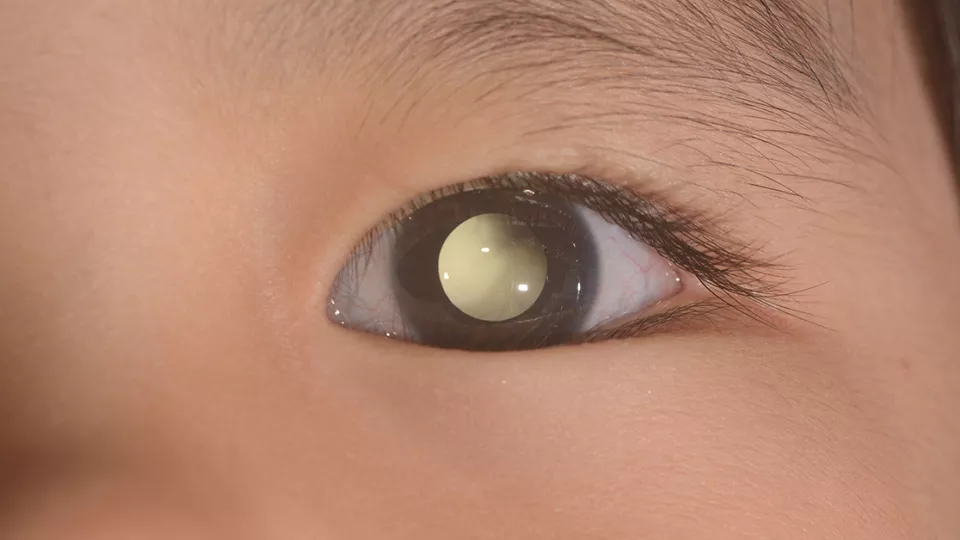
Why Are Some Retinoblastoma Tumors More Aggressive?
Jesse Berry, MD, thinks about retinoblastoma—a lot. She treats infants and toddlers who are at risk of losing their vision and possibly one or both of their eyes. This rare cancer has devastating consequences for the most vulnerable patients. That’s why she has been single-minded in finding answers.
Since retinoblastoma develops in the retina located at the back of the eye, it is not readily noticed. In fact, the condition is usually found when parents or caregivers notice a glow in their young child’s eye in low light or after taking a flash photo. When the child goes to the doctor, diagnosis is done differently from that of most cancers, which are typically detected by biopsy—that is, examining a sample of the tumor. Retinoblastoma cannot be biopsied because of the risk of spreading the cancer to the rest of the body. Historically, the child would be presumed to have retinoblastoma, which is a genetic condition, and treated for the cancer.

In 2017, while treating a child for retinoblastoma, Dr. Berry removed some fluid from the front of the eye, called aqueous humor, prior to injecting chemotherapy. As she removed and discarded the fluid, she contemplated its proximity to the tumor. Pursuing this thought led her to discover that the aqueous humor does, in fact, contain tumor DNA—a finding that completely changed the treatment paradigm for retinoblastoma. Instead of a tissue biopsy, retinoblastoma could now be diagnosed by a liquid biopsy. This method of genetic diagnosis confirmation allows for earlier and more specific treatment of the disease and, ultimately, better outcomes for her patients.
In addition to performing clinical and surgical care, Dr. Berry has continued her research. In her lab’s latest study published in Nature Communications, the team has identified more genes that cause retinoblastoma. This new information will allow doctors to stratify patients by disease severity and to treat patients with more precision. These findings also open the door to more potential therapeutic targets.
“As a clinician who treats these patients, I was so frustrated because I would see two kids who looked the same clinically and who received the same treatment, says Dr. Berry. “One child would respond beautifully. But the other child had a more aggressive tumor that didn’t respond to treatment or reoccurred. I felt like there had to be something happening at the cellular level responsible for what we were seeing. We now know that molecular analysis of the aqueous humor can explain those differences.”
Most retinoblastoma tumors result from a mutation in the Rb gene. But the cancer can also arise from epigenetic changes—genes being switched on to promote tumor growth and disease progression. One of the most significant epigenetic changes, called methylation, is caused by a chemical alteration to the gene that can turn a normal cell into a tumor cell. DNA methylation is a common tumor marker used for diagnosis and prognosis in many cancers.
The team of investigators set out to determine the methylation status in the aqueous humor samples from patients with retinoblastoma. They identified 294 genes that were regulated by methylation to encourage tumor growth. Further investigation revealed that methylated genes were also associated with more aggressive forms of the disease.
The next step? Dr. Berry hopes that by better understanding the mechanisms causing these tumors to behave aggressively she can target them with specific therapies to save the vision of her young patients.


